What is curry? Our brains might immediately go to a dreamy mix of coconut milk, meat, and spices. But the term “curry” has swelled to include a number of dishes throughout the world that are simmered in or covered with herbs and spices. Yeah, the curry category is that broad.
Shops like Curry Up Now and Go! Go! Curry! take their definitions fast-casual. Chefs nationwide are keeping the wave of family run Indian buffet bars strong. Celebrity chefs are offering excellent curries at upscale joints, too. So to help answer that question on the table—”what is curry anyway”—we’ll start with curry’s Indian origins, then we’ll explore different types of curry to inspire your next catered event.

What Is Curry?
Portuguese explorers swiftly started trading curry spices in the 15th century, after they established the first marine trade routes from Europe to India. Fast forward to the 1700s when the British were incorporating “curry powder” into their cooking back home. Over the years, curry’s contrasting notes of sweet, spicy, sour, and heat have adapted to the ingredients and cultural preferences of various regions. There are as many types of curry as there are hands cooking it. But most types of curry start in India.
Indian Originals
In India, spices are toasted and ground into curry powder. They start with the essential cumin, cardamom, coriander, garam masala, and chili powder. Beyond these essential spices, the masala (spice blend) varies by recipe and region. Turmeric, mustard, cinnamon, black pepper, and ginger are common additions.
How many types of curry are there?
1. Madras Curry
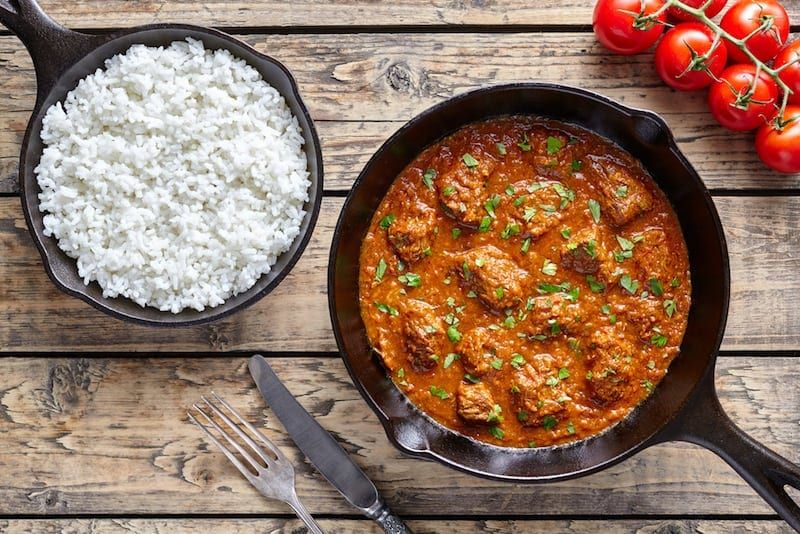
Madras is the most common masala curry stateside. Cayenne, clove, and funky fenugreek go into this curry, which leans heavy on the chilies, too. Stewed with tomatoes, the vibrant red sauce soaks delightfully into chicken, beef, or seafood.
2. Korma
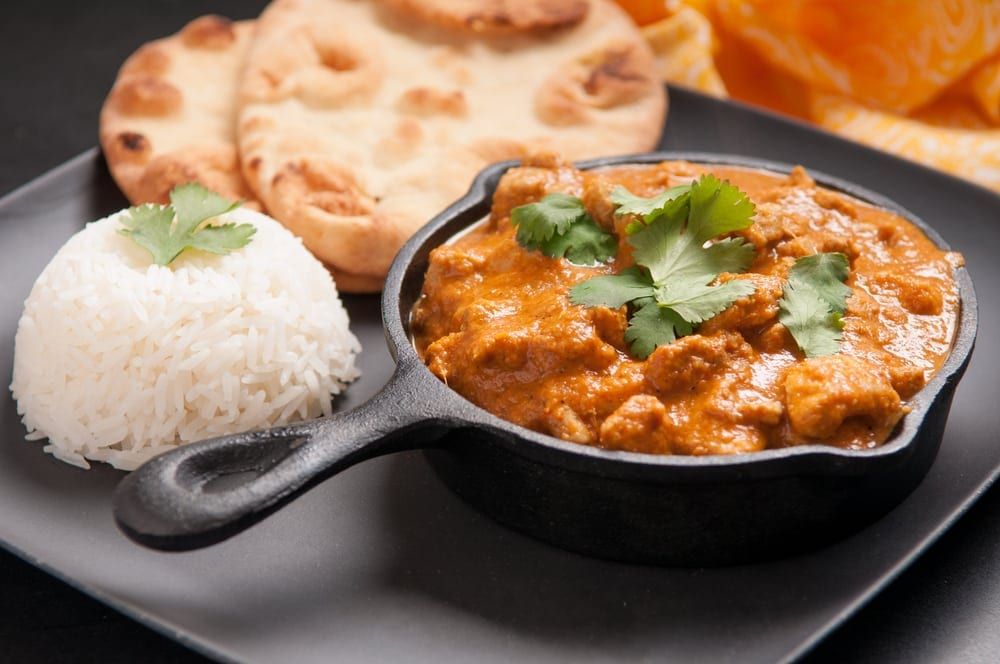
With so much spice, Indian dishes often rely on yogurt’s cooling properties. Korma combines braised meat or vegetables with yogurt, garam masala, and curry powder. Whether mild or spicy, the dairy works with the meat juices for a rich, creamy dish.
3. Rogan Josh
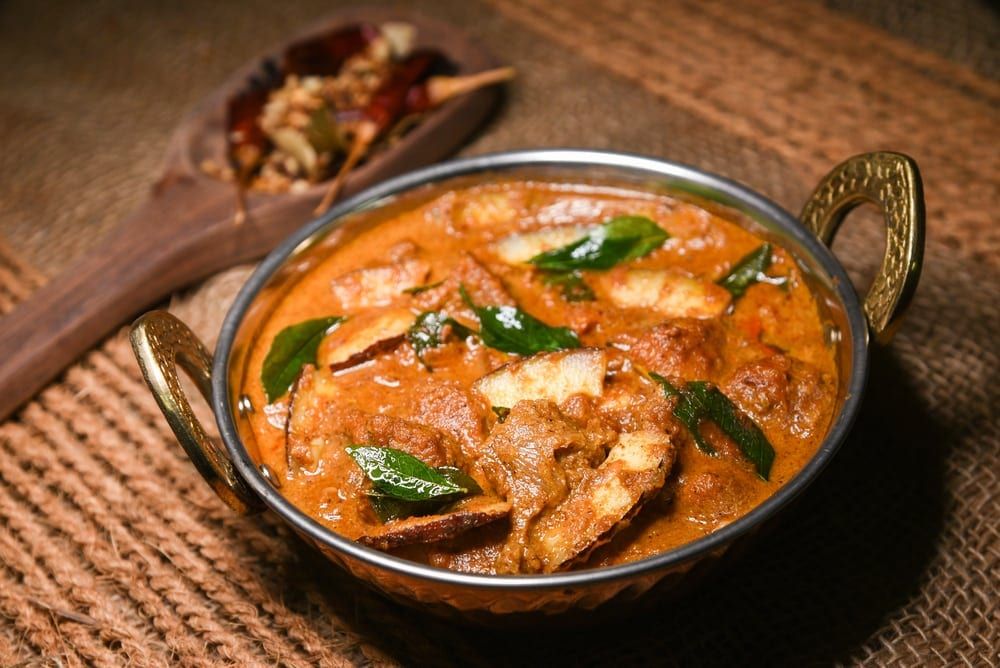
A stunner and the signature curry of Kashmir, rogan josh means lamb stewed down with Kashmiri chilies. Warm cinnamon and cloves meet floral coriander and cardamom. Cooling yogurt makes sure the spices don’t penetrate too deep. The resulting thick, meaty sauce has a beautiful red luster and layered flavor.
4. Vindaloo
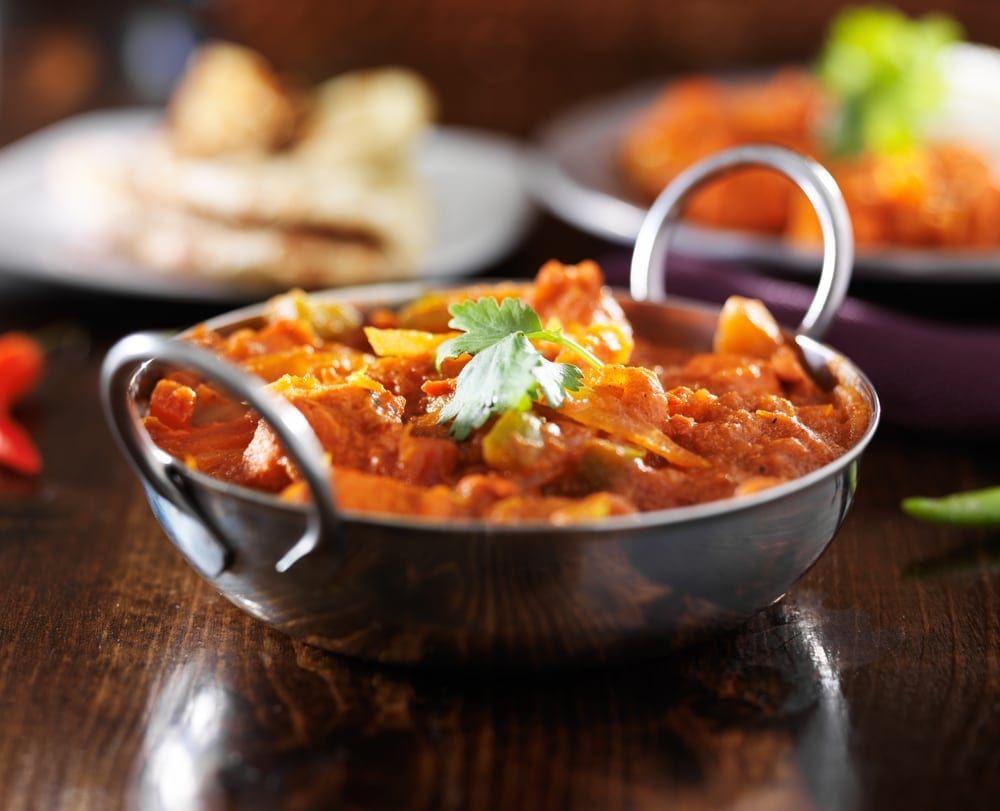
From the southern Goa region, vindaloo leans a little Portuguese. Here, the meat is primarily pork. Sweet tamarind, warm spices, floral cardamom, black pepper, and several hot chilies make for a red-gold hue that doesn’t stop hitting with heat.
5. Saag
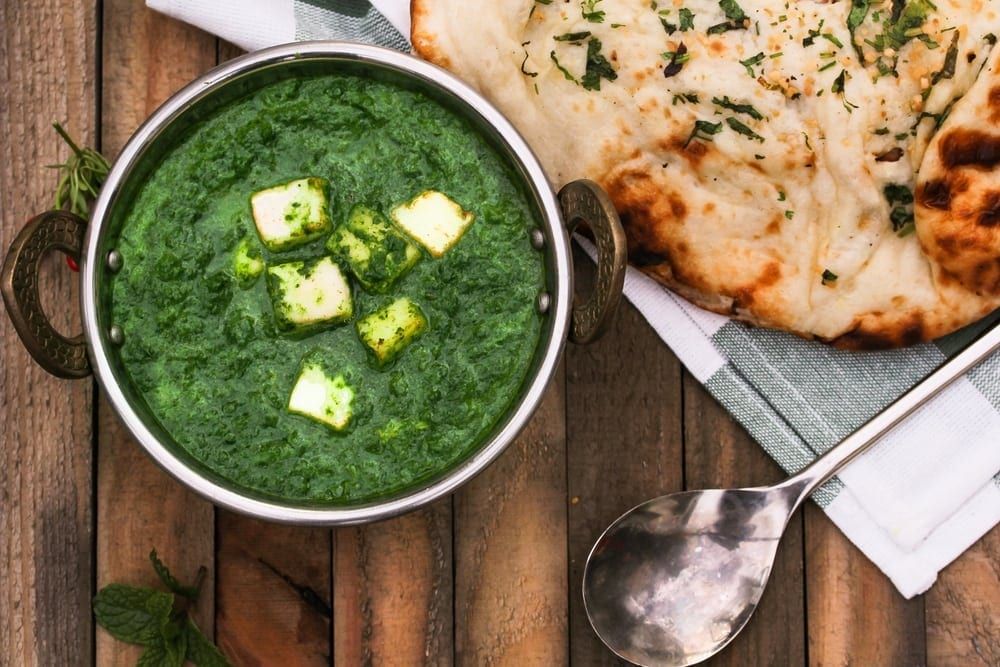
See saag? Think green! Spinach, kale, collards, chard, or other leafy greens are softened with chicken, yogurt, and spices. Fresh ginger and garlic break through the dark, chunky dish. The flavors of saag can vary depending on the spices used. It can taste slightly spicy from red chilies, warm from garam masala, or fresh from coriander and green onions.
6. Tikka Masala
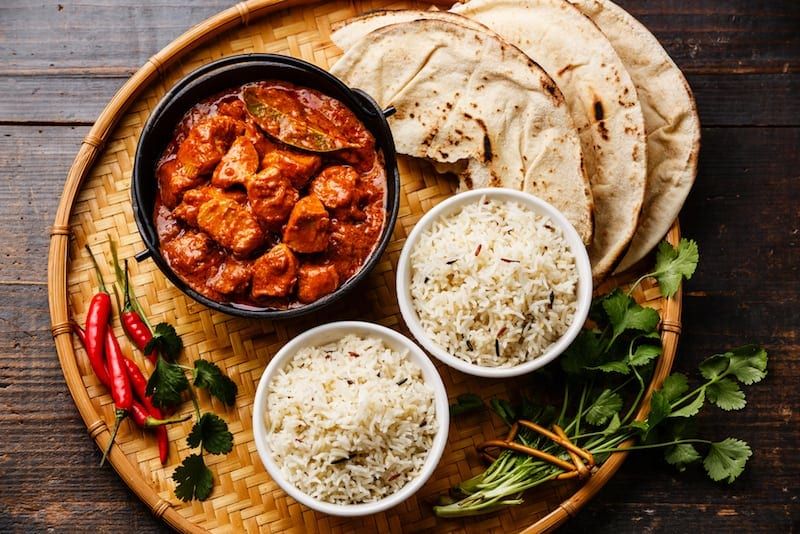
Chicken marinates in yogurt, garlic, and lime before getting roasted on a spit or in a tandoori oven to a beautiful char. Then, paprika and tomato offer a warm orange hue. When served with naan, it’s the ultimate creamy —and not too spicy—comfort food. So popular, it’s now the national dish of England, too.
7. Jalfrezi
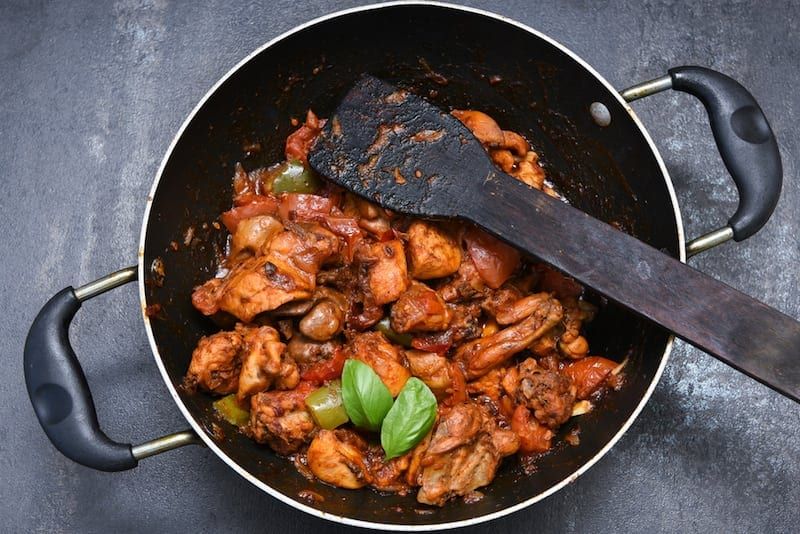
This is another of India’s beloved curries. Meat, fish, or veggies marinate in cumin, coriander, and turmeric. This is fried in oil with green chilies, onions, cabbage, and tomatoes. Cooked down, the resulting dish has a thick, dryer sauce and a good pop of green heat.
Let’s Talk Thailand
In Thailand, curry means paste. Pressed aromatic chilies, garlic, coriander root, ginger, lemongrass, kaffir lime rind, and shrimp paste add punch to dishes in a snap. Often served with bamboo shoots, baby eggplant, string beans, bell pepper, and fresh basil, the curry sauces balance heat and coconut. The curry can make room for whatever meat or vegetable you choose. Mango, coconut, and root vegetables are common variations, too.
1. Red Curry
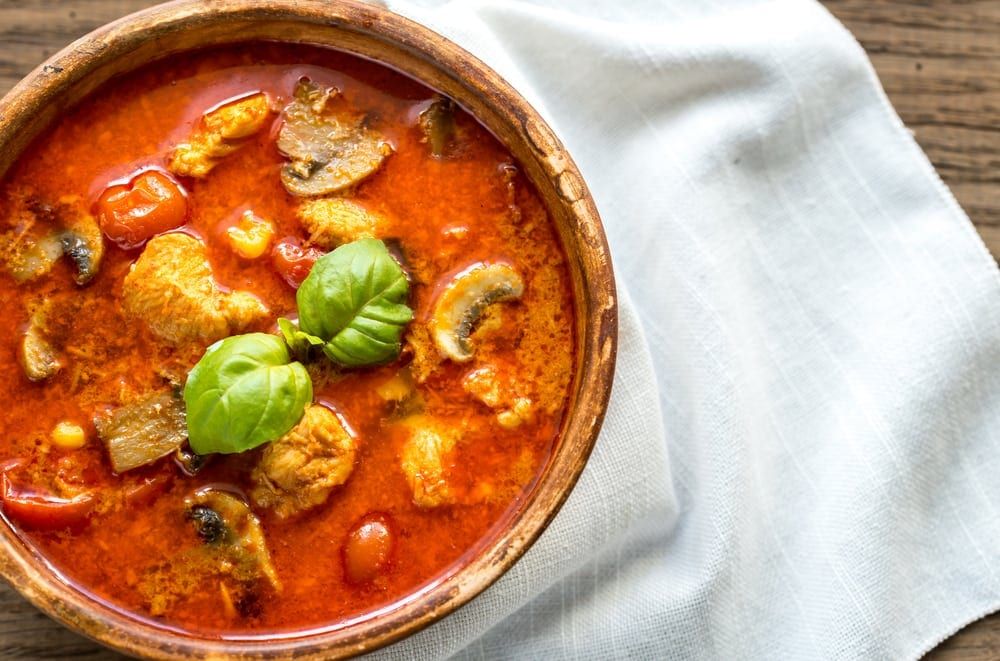
“Thai red curry paste is the condiment that’s started a thousand meals in my kitchen,” swoons New York Times food columnist Melissa Clark. Here, more than one kind of red chili goes into the paste. Then galangal (a brighter ginger) and garlic keep it fresh, and turmeric root pops the color.
2. Green Curry
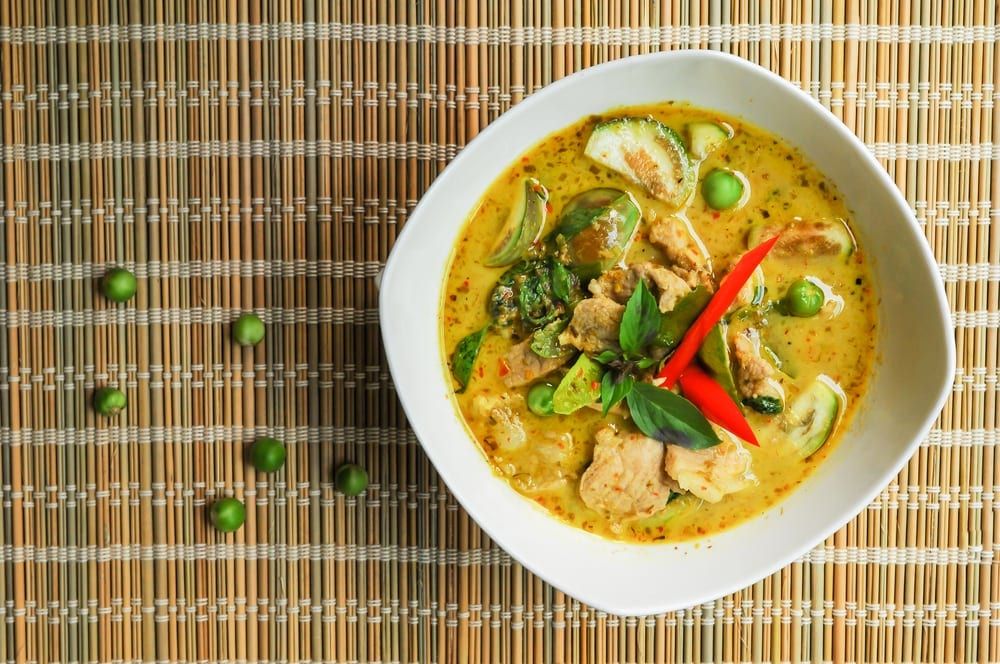
Sub green chilies and you’ve got green curry! Sweet basil, green eggplant, and kaffir lime leaves make for a lovely bright green hue. Chicken and shrimp are particular good eats, here.
Enter you delivery address and explore caterers near you:
3. Yellow Curry
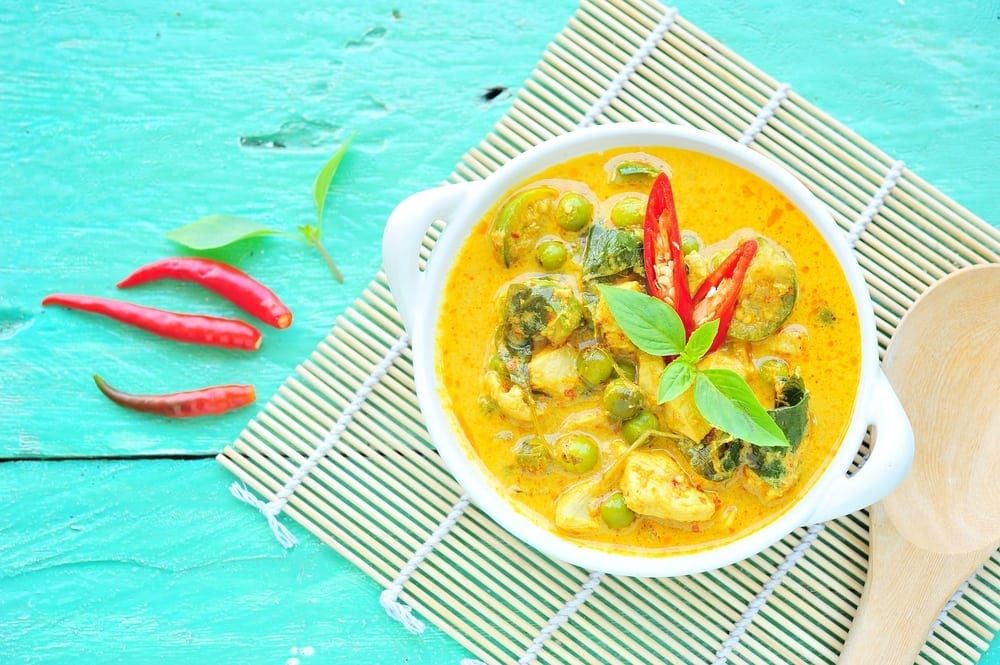
Turmeric takes the stage, now! With coriander lemongrass, galangal, garlic, cumin, and dried red chilies helping out, it’s mild and slightly sweet.
4. Massaman Curry
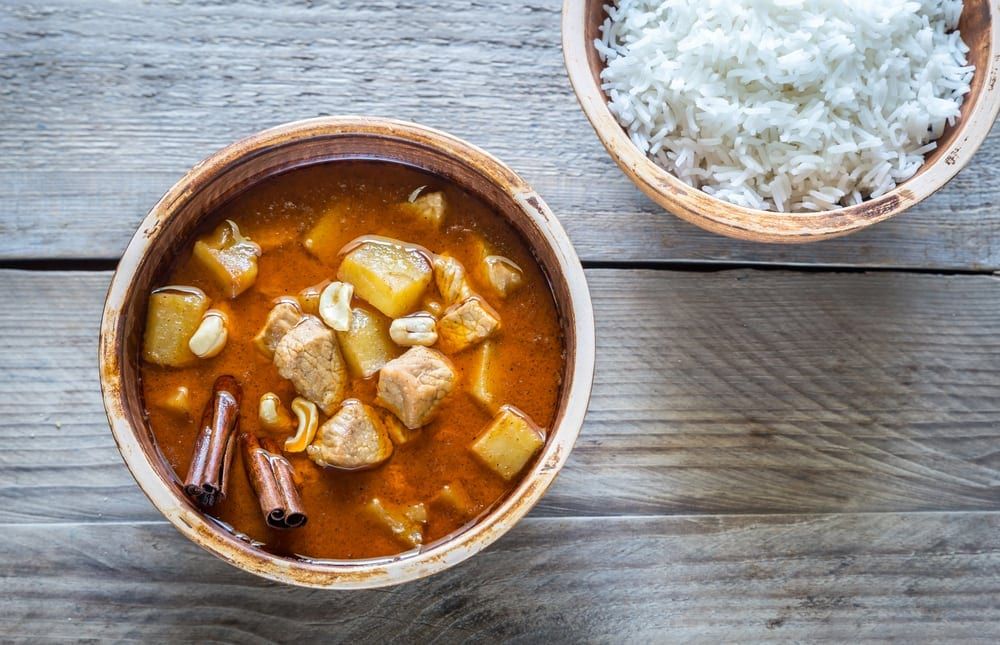
This warm and sweet curry, of Persian influence, is the mildest on a Thai menu. It’s made with palm sugar, whole star anise, cloves, and cinnamon. Fresh galangal, vegetables, peanuts, and potatoes make it fun and fanciful, too.
And in Japan?
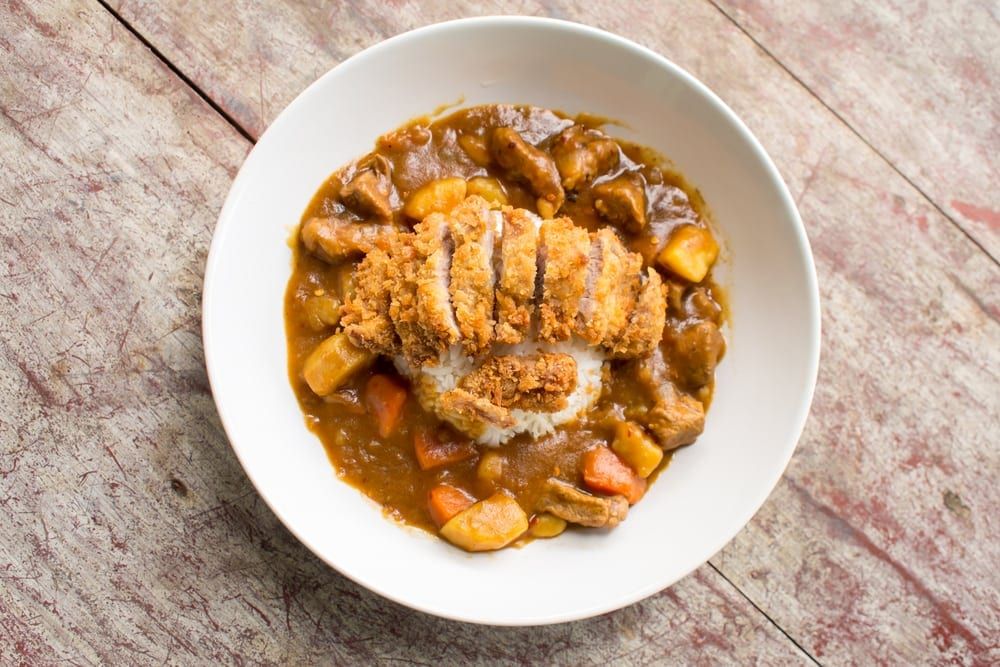
What is curry in Japan? It’s a striking dark sauce spicy with black peppercorns, garam masala, madras curry, and turmeric. Combined with a roux—a thickening paste of butter and flour—and sautéed with beef, carrots, and potatoes, the curry is poured over white rice and topped with fried egg. To make it a main, get a breaded fried pork cutlet (pork katsu) on there, too.

Devour These Types of Curry, Too!
1. Ceylon Curry
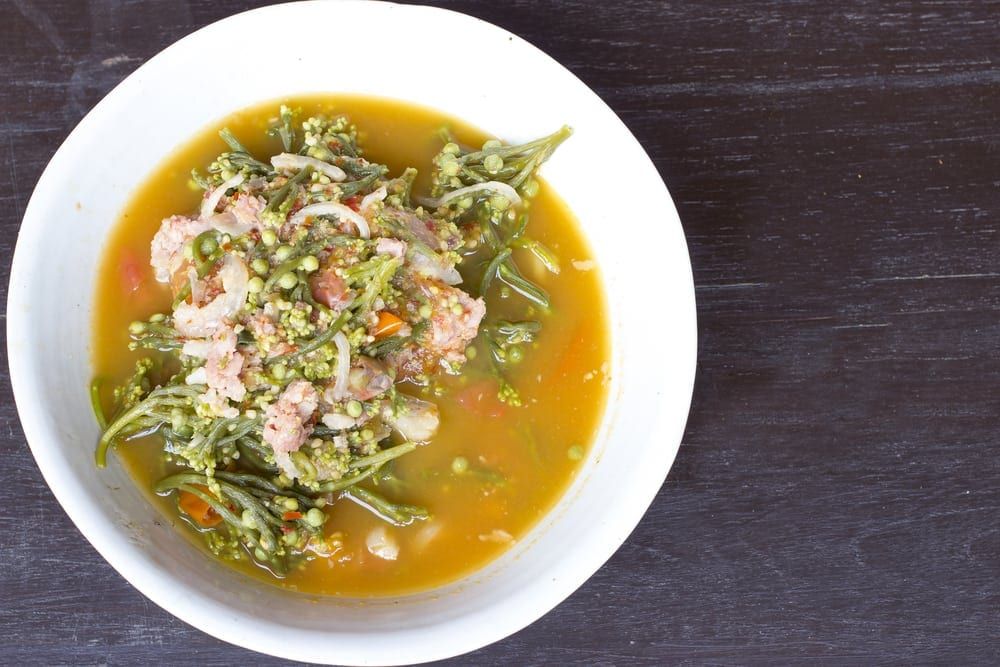
Sri Lankan writer S. H. Fernando Jr. tells Saveur that the ingredients aren’t what makes Ceylon curry (modern-day Sri Lanka) special. It’s how the same curry spices are roasted almost to a burnt point before they’re ground to a powder or pressed to paste. From there, Ceylon curry hits meat and seafood dishes with coconut milk and lime. Cashews and tropical fruits may come into play, too. The result is a curry bursting with almost barbecue-like flavor, blasting tart and sweet.
2. Jamaican Curry
Embracing the Caribbean heat, Jamaican curry leans into blisteringly hot Scotch bonnet peppers, then cumin, anise, and whole mustard seeds, too. The soupier curry often gets hit with vinegar, Worcestershire, and hot sauce, too, making for a slightly sour, increasingly crave-able dish.
3. Trinidadian Chicken Potato Curry
Cilantro, ginger, garlic, and hot scotch bonnet peppers make this curry an island classic. Water and oil help to build this coconut-free sauce. Marinated dark-meat chicken is thrown in, then slowly braised. This all comes together for bright, spicy satisfaction. Served over rice or with roti.
4. Afghan Chicken Korma
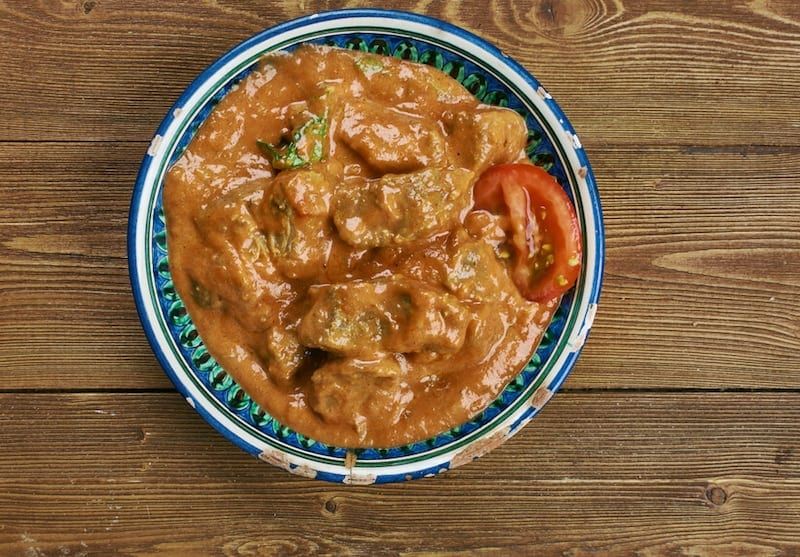
Similar to the korma served east, Afghan korma lets turmeric, ginger, garlic, long red chilies, and sour plums make for a warm and slightly sour curry. Then chana dal—a small Indian lentil—offer some texture.
5. Indonesian/Malaysian Rendang
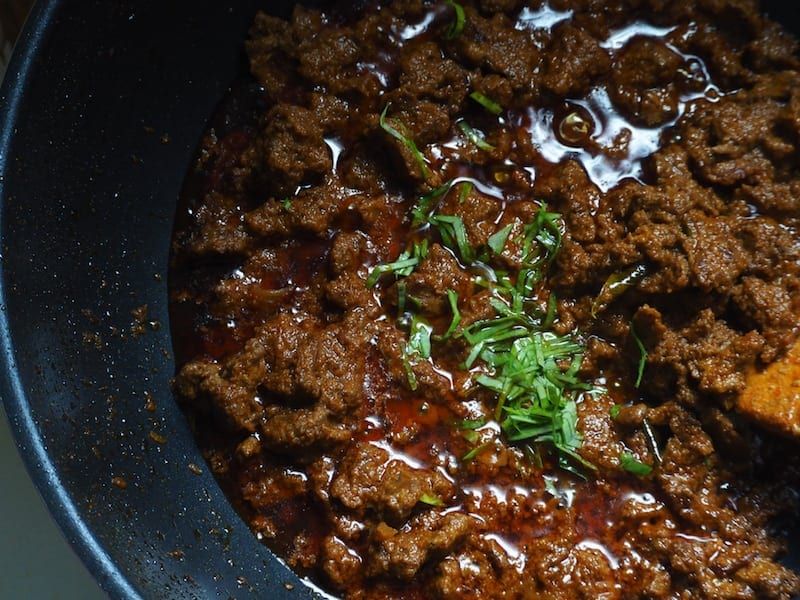
Hailing from Indonesia and well-known in Malaysia, too, this “dry” beef curry is slow cooked and reduced until the coconut milk has nearly evaporated. The sweet, sour, spicy, savory notes of curry come through chunks of meat coated with the thick, spicy paste.
6. African Vegetable Curry
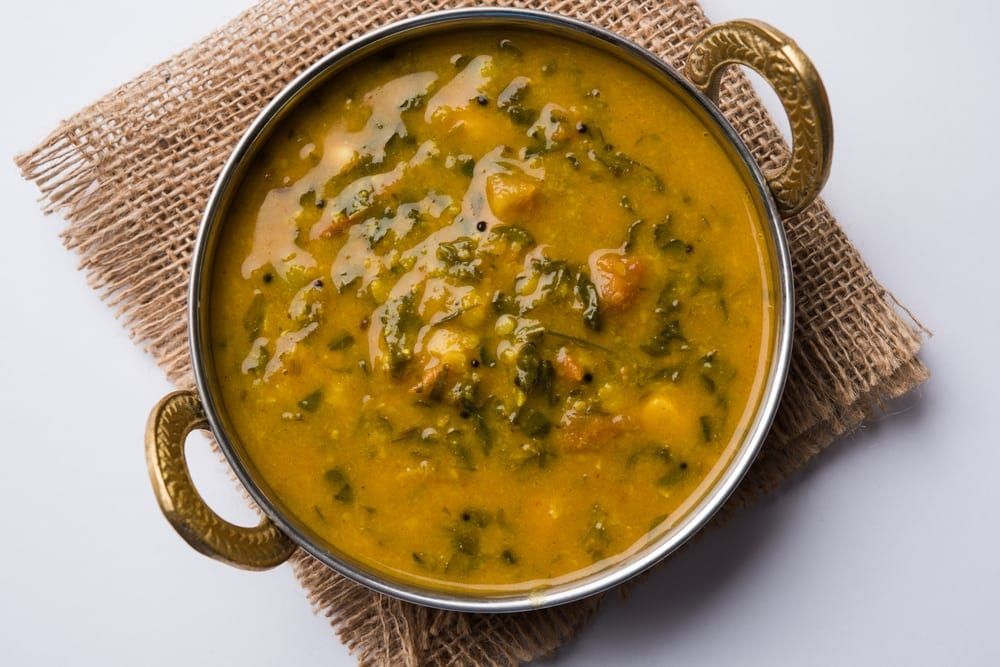
Africa offers many types of regional curry. But most chefs highlight scotch bonnet peppers, fresh ginger, and a hit of lemon in their curries. Often using meat and seafood, these curries can also pack in local vegetables. Calling all vegans—this curry is for you.
7. Portuguese/Macanese Curry
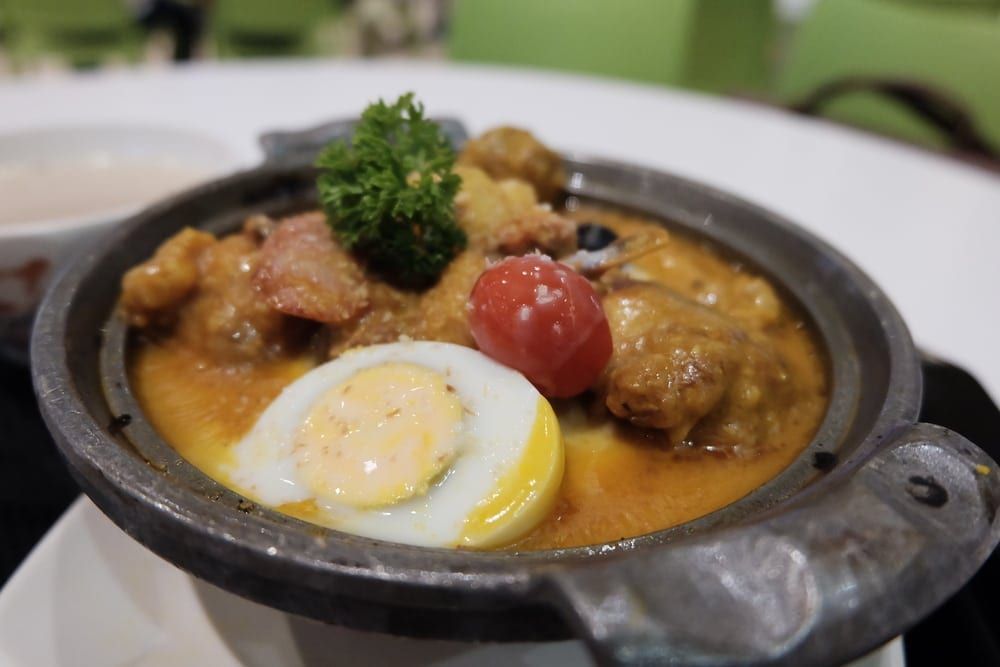
The Chinese island of Macao was a Portuguese colony until 1999, and this curry blends the cultures. Dark chicken, madras curry powder, coconut, and potatoes make the base. Then brined olives, sweet tomato, spiced dried pork, fresh parsley, and a final hit of lemon can add flair. (Try this recipe from Chicago’s Fat Rice on Tasting Table.)
Tips for Curry Success
Consider ordering curry for your team’s next adventure. Instead of adding one or two dishes onto a larger Indian spread, make a curry buffet out of it. Let guests sample all the types of curry at the table, as they would at an Indian buffet. Make sure you have plenty of rice and naan to sop up sauce.








